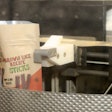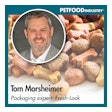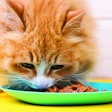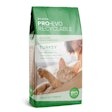As they say, "a picture is worth a thousand words." So, it is no surprise that many petfood manufacturers will employ vignettes, photographs or other depictions of ingredients on their labels in an effort to entice prospective purchasers towards their products. These illustrations can be especially helpful in reaching those potential customers with language or reading issues. However, improper use of graphics, not just words, also can get a company in trouble with regulators.
The Association of American Feed Control Officials (AAFCO) Model Regulation for Pet Food and Specialty Pet Food PF2(c) states, "A vignette, graphic or pictorial representation on a petfood or specialty petfood label shall not misrepresent the contents of the package." Over the years, I have persistently warned clients of potential issues with their use of ingredient graphics. Many of those times my advice went unheeded, and perhaps in most of those cases no regulatory consequences were suffered (admittedly, I can be overly cautious at times).
Regardless, lately enforcement by state feed control officials appears to be of higher priority. I have seen more regulatory letters in objection to "inappropriate vignettes" in the past few months than in the previous ten years! In this situation, artistic license is not a viable defense, so a few considerations when choosing appropriate graphics are prudent.
1. Reasonable representations of ingredients
A beautifully presented salmon fillet or boneless, skinless chicken breast may look appealing to the consumer, but it is truly representative of the salmon meal or chicken meal that is in the product? In the same way you can't refer to lamb meal as just "lamb" in the product variety name or in any other claim on the label, it may be deemed deceptive to do essentially the same thing graphically. Now, it's understood that the depiction of a brownish pile of rendered meal in the product isn't very visually attractive, either, but there can be a middle ground.
A good premise to follow is to try to convey the nature of the source of the ingredient, rather than the ingredient itself. For example, a dressed, whole turkey carcass, with bones and skin attached, may be a better example of what goes into that turkey meal than prepared slices of white meat turkey only. In the same vein, a whole, unprepared fish rather than a fillet or steak may suffice as an appropriate depiction of the source of the fish meal.
An even safer illustration of a meat, poultry or fish meal would be a portrayal of the live animal (realistic or cartoonish). For example, the silhouette of a steer, caricature of a chicken or photo of salmon leaping upstream effectively convey the nature of the ingredient with minimal risk of being considered misleading.
What if your product does not contain meals? Then, a depiction of an unprepared piece of meat, poultry or fish may be reasonable. However, the inclination to show it prepared in a manner that is not representative of actual contents invites regulatory consternation. Is the chicken really "roasted" as portrayed? Are the cuts of beef or fish, in fact, grilled as suggested by the label graphics?
2. If not in the product, not on the label
Sounds like a clear enough concept to follow, but this aspect is often forgotten when choosing graphics. A picture of a literal cornucopia of fruits and vegetables may look pretty, but if it includes items that are not in the ingredient declaration, then there may be a problem. So, attention to these details are sensible. The temptation to add a little garnish to enhance the appearance of an ingredient can also be an issue. Does the bed of greens upon which the fish is displayed (with lemon wedge on the side) mean the product also contains greens and lemon? Is that sprig of rosemary lovingly placed on top of the lamb chop in the petfood, too? Rosemary extract doesn't count!
It is also advisable for the vignette be specific to that variety. Perhaps the majority of products in a line contains sweet potatoes and blueberries, but a few lack one or the other. In that case, the same graphic for all varieties is not a good choice. You also may be tempted to show the variety of animal protein sources for all products in a line in a single photo, e.g., a depiction of lamb, beef, chicken, turkey and salmon in one group shot. For a person with a reading or language barrier who may be relying on the graphics to determine the product's contents, it would be easy to mistakenly believe that each and every product contains all those ingredients.
3. Everything in perspective
The AAFCO regulation to prevent undue emphasis on minor ingredients (i.e., the "3% rule") expressly pertains to words, not graphics. Still, overemphasis of what is in fact a small proportion of the product as a whole may be deemed misleading, so reasonable inclusion levels should still apply. Also, the graphic emphasis of an ingredient in proportion to other ingredients may be called into question. Yes, there is a small amount of crab in an otherwise fish-based product, so crab may be represented on the label, but does it deserve center stage in front of the much more major contributing ingredients? Does the minimal amount of cranberry in the product warrant a glut of cranberries strewn across all panels?
4. Exceptions to the rule
The one exception to some of the above may be with respect to flavor designations. In US Food and Drug Administration (FDA) regulations, a picture of a fruit or other food item can be used to represent the characterizing flavor of a food, even when the product does not contain any of the actual ingredient; e.g., an orange on the label of an artificially-flavored orange soft drink. In those circumstances, though, the vignette needs to be in close association with a clear statement regarding the true nature of the source of the flavor; e.g., a conspicuous "artificially flavored" in conjunction with the picture of the orange.
In the same vein, someone may choose a combination of sources to create a unique flavor profile, and use graphics to represent that flavor. For example, a product with beef and cheese may be "cheeseburger flavor." At least to me, a stylistic impression of a cheeseburger would be more a reflection on the flavor concept rather than the actual ingredients. A depiction of a cheeseburger without the bun, a little lettuce and some ketchup dripping off of it would just be a blob; i.e., not readily recognizable to the consumer. So, while I can't speak to how all regulators may view it, to me a cartoon of a dressed-up cheeseburger with its accoutrements should be okay, even though the product doesn't actually contain each and every component as shown in the drawing.




.jpg?auto=format%2Ccompress&fit=crop&h=167&q=70&w=250)












